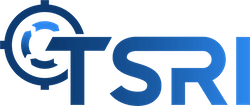What's in the Bill?
The Federal government is finally getting around to mandating the modernization of legacy IT systems within government agencies with the bipartisan Legacy IT Reduction Bill of 2022. If passed—and its bipartisan support from the likes of sponsors John Cornyn, (R-TX) and Maggie Hansen (D-NH) indicate that it probably will—the bill will seek to address the security, efficiency, and cost issues that arise from the ongoing use of antiquated systems and software languages throughout governmental agencies.
The bill will assert two basic mandates for government agencies.
1. IT Inventory - In the first year after the bill’s passage, agencies will be required to submit an inventory of all legacy IT systems they use, operate, or maintain. Then every five years, that inventory must be updated. The inventories will also need to prioritize agencies’ top 10 systems in need of modernization, the most recent update or technology refresh the system went through, and the cost and contractor who maintains the system in addition to other details.
2. Modernization Plan - Within two years of passage, agencies must submit their IT modernization plan to congress. In addition to the inventory, the plans submitted must include which systems the agency prioritized for modernization, retirement or disposal, and the steps the agency will take to modernize those systems.
"The funds are there now in the TMF, the question is, which agencies will get ahead of the regulation and access the funding before it is depleted?"
The Money Question: How Will Mandated Modernization be Funded?
While the bill does not create a funding source for modernization, it does mention existing sources of funding. Primarily, it references the Technology Modernization Fund (TMF) as one of the main programs that agencies will likely work with to support the plan along with the IT working capital funds (though working capital funds have had some trouble getting off the ground), and the Federal Risk and Authorization Management Program (FedRAMP), which is primarily concerned with security.
These are programs by application; not all government agencies get the kind of congressionally supported budgetary increases that the Internal Revenue Service received this year for IT modernization. The 2022 omnibus spending bill passed by congress allocated $275 million to the IRS to be used for business systems modernization. This increase of $52 million above previously enacted funding will help the agency modernize its legacy IT systems and improve IRS web applications. The size of the increase—and the willingness of Congress to allocate it—indicate the importance Congress has placed on getting modernization done across agencies.
Among the sources of funding we’ve mentioned, the TMF has proven to be the most successful in delivering funds to programs. Created by the Modernizing Government Technology Act of 2017, the TMF offers support to help agencies get ahead of the inevitable, while improving their services to the public, cost efficiencies, and security by making modernization funding available. So far, the TMF has received $175 million through the annual budget process and $1 billion through the American Rescue Plan to fund modernization projects.
A Track Record of TMF Success - with 99.67% Automation
With The Legacy IT Reduction Act of 2022 likely to pass, TSRI has a resounding track record of successfully supporting agencies in modernizing outdated legacy information technology systems. Our recent modernization project for the US Department of Housing and Urban Development (HUD) was the first to leverage the funds available through the TMF.
HUD partnered with TSRI and GovCIO using TMF funds to modernize several of its critical systems on a legacy Unisys mainframe. TSRI provided automated code conversion of more than 1.3 million lines of the client's COBOL applications, with hierarchical DMS and relational RDMS databases, to the Microsoft Azure cloud. TSRI implemented Java as the target language and Microsoft SQL Server as the target relational database at 99.67% automation levels.
It was a remarkable success. On day one after the production systems were switched over to the cloud, the new system supported 25,356 users and 299,715 transactions with only three user problems reported. The positive results could be seen in the first 30 days during which the new system disbursed billions of dollars in program funds to eligible users without a single error. The modernization program has proven well worth the investment of TMF funds and the effort of HUD.
Watch This Space and Get Ahead of the Regulations
The HUD modernization project provides a solid model for soon-to-be-mandated modernization programs that agencies across the government will need to address soon. The funds are there now in the TMF, the question is, which agencies will get ahead of the regulation and access the funding before it is depleted?
As of March 30, 2022, the bill has been successfully voted out of the senate committee and recommended to the full Senate commending that the bill is considered further on the floor. We’ll keep you updated on its progress through this blog.
Get ahead of mandated modernization, contact TSRI now
---
TSRI is Here for You
As a leading provider of software modernization services, TSRI enables technology readiness for the cloud and other modern architecture environments. We bring software applications into the future quickly, accurately, and efficiently with low risk and minimal business disruption, accomplishing in months what would otherwise take years.
TSRI – Software Modernization Assured
See Case Studies
Learn About Our Technology
Get Started on Your Modernization Journey Today!

